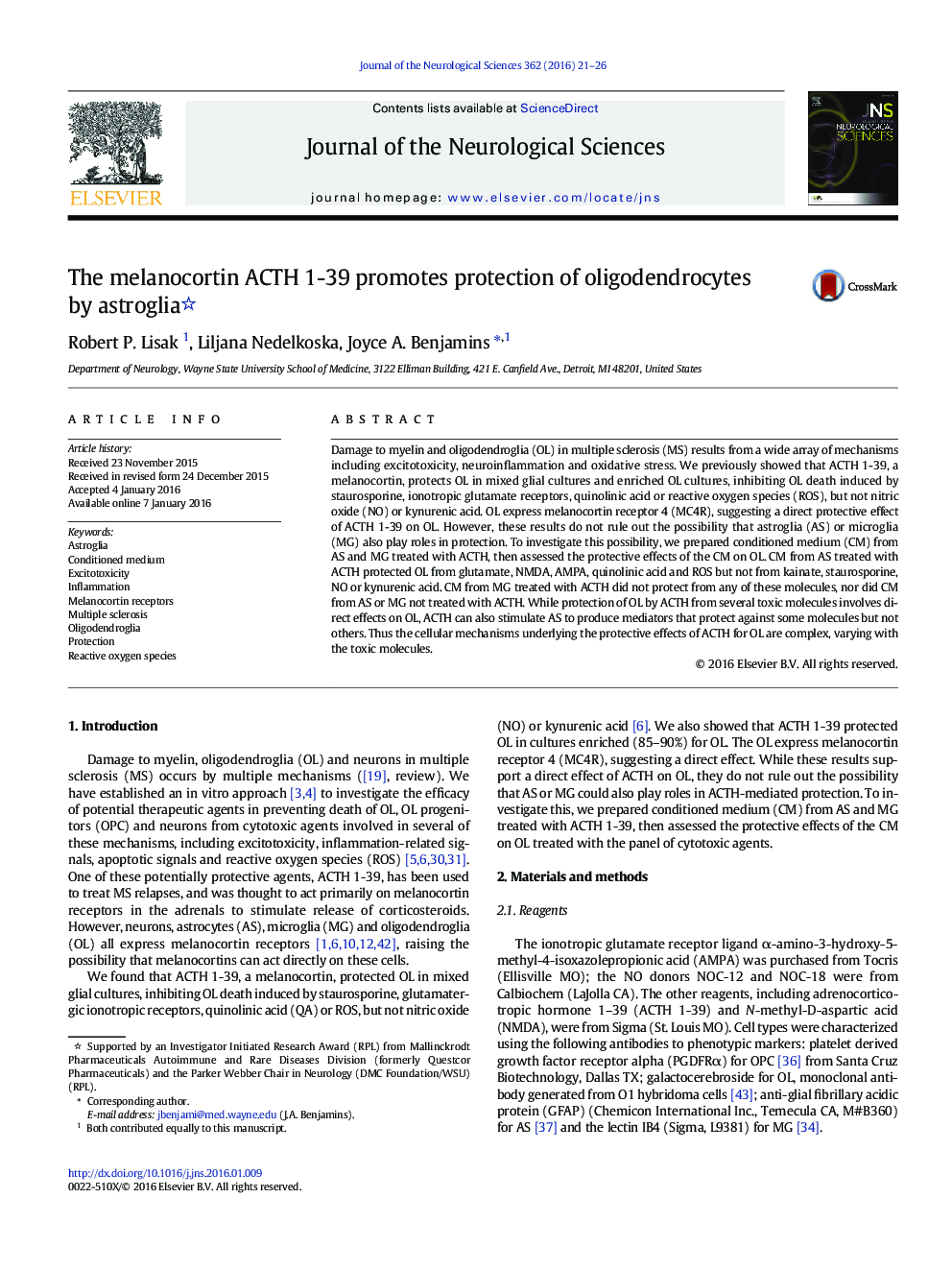| Article ID | Journal | Published Year | Pages | File Type |
|---|---|---|---|---|
| 1913036 | Journal of the Neurological Sciences | 2016 | 6 Pages |
•Conditioned medium from ACTH-treated astroglia protects oligodendroglia from glutamate, NMDA, AMPA, quinolinic acid and ROS.•These results are comparable to our previous results with ACTH itself, except ACTH also protected from kainate and staurosporine.•Conditioned medium from astroglia and microglia not treated with ACTH, or from microglia treated with ACTH did not protect from the toxic agents.•The cellular mechanisms underlying the protective effects of ACTH for oligodendroglia are complex, varying with the toxic agents.
Damage to myelin and oligodendroglia (OL) in multiple sclerosis (MS) results from a wide array of mechanisms including excitotoxicity, neuroinflammation and oxidative stress. We previously showed that ACTH 1-39, a melanocortin, protects OL in mixed glial cultures and enriched OL cultures, inhibiting OL death induced by staurosporine, ionotropic glutamate receptors, quinolinic acid or reactive oxygen species (ROS), but not nitric oxide (NO) or kynurenic acid. OL express melanocortin receptor 4 (MC4R), suggesting a direct protective effect of ACTH 1-39 on OL. However, these results do not rule out the possibility that astroglia (AS) or microglia (MG) also play roles in protection. To investigate this possibility, we prepared conditioned medium (CM) from AS and MG treated with ACTH, then assessed the protective effects of the CM on OL. CM from AS treated with ACTH protected OL from glutamate, NMDA, AMPA, quinolinic acid and ROS but not from kainate, staurosporine, NO or kynurenic acid. CM from MG treated with ACTH did not protect from any of these molecules, nor did CM from AS or MG not treated with ACTH. While protection of OL by ACTH from several toxic molecules involves direct effects on OL, ACTH can also stimulate AS to produce mediators that protect against some molecules but not others. Thus the cellular mechanisms underlying the protective effects of ACTH for OL are complex, varying with the toxic molecules.
